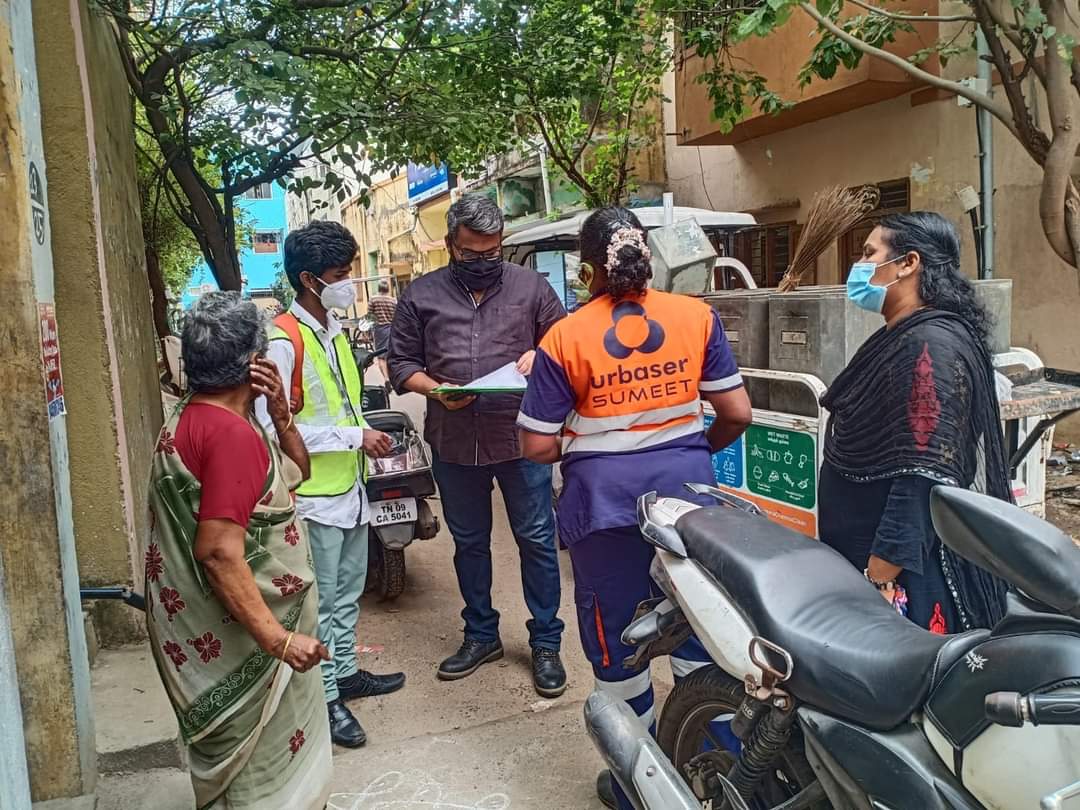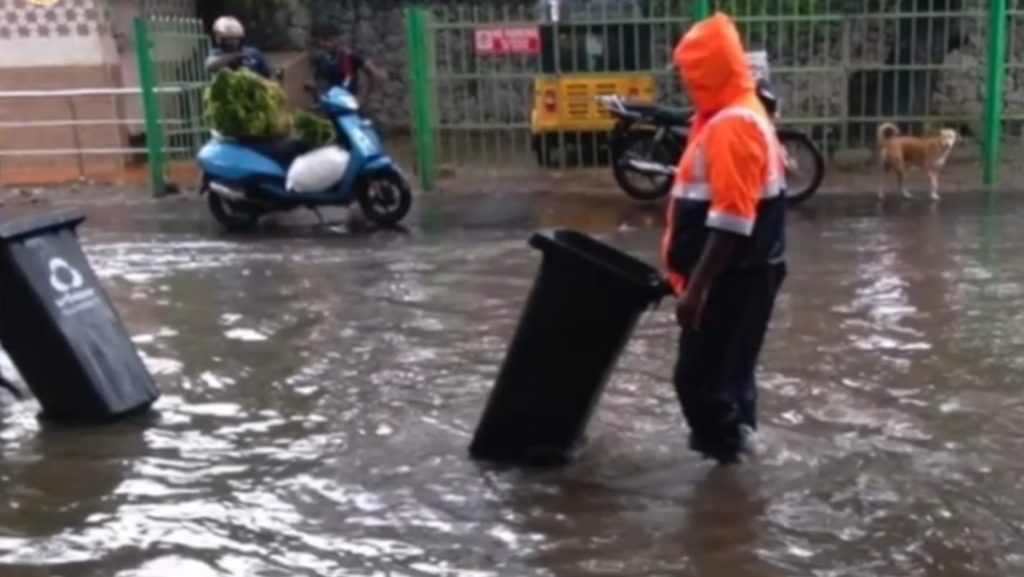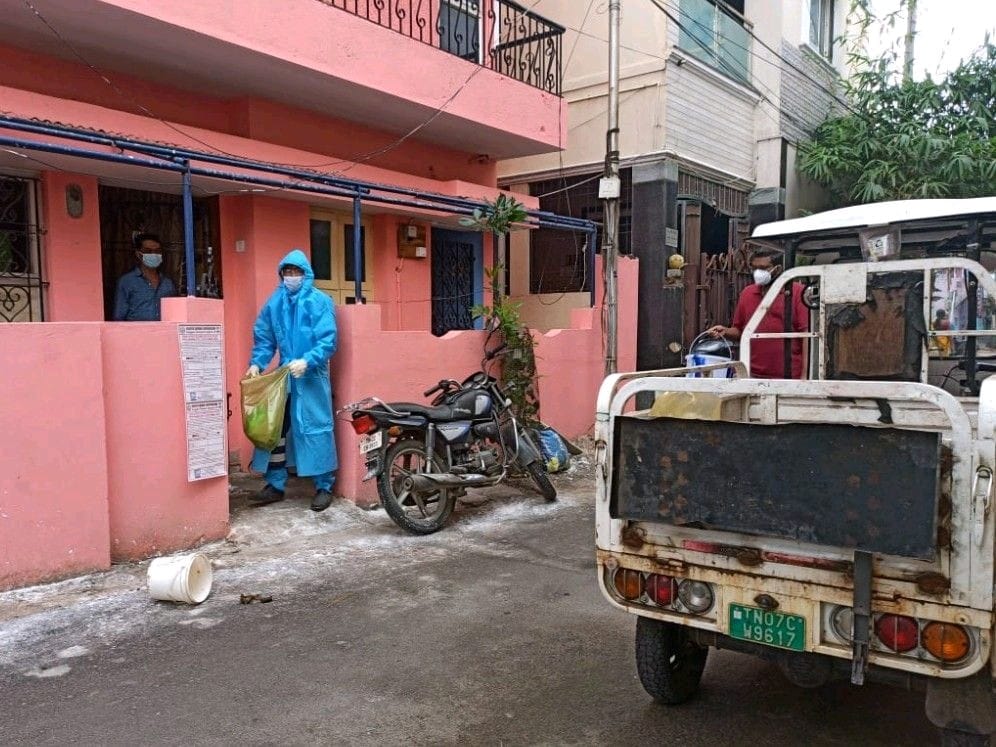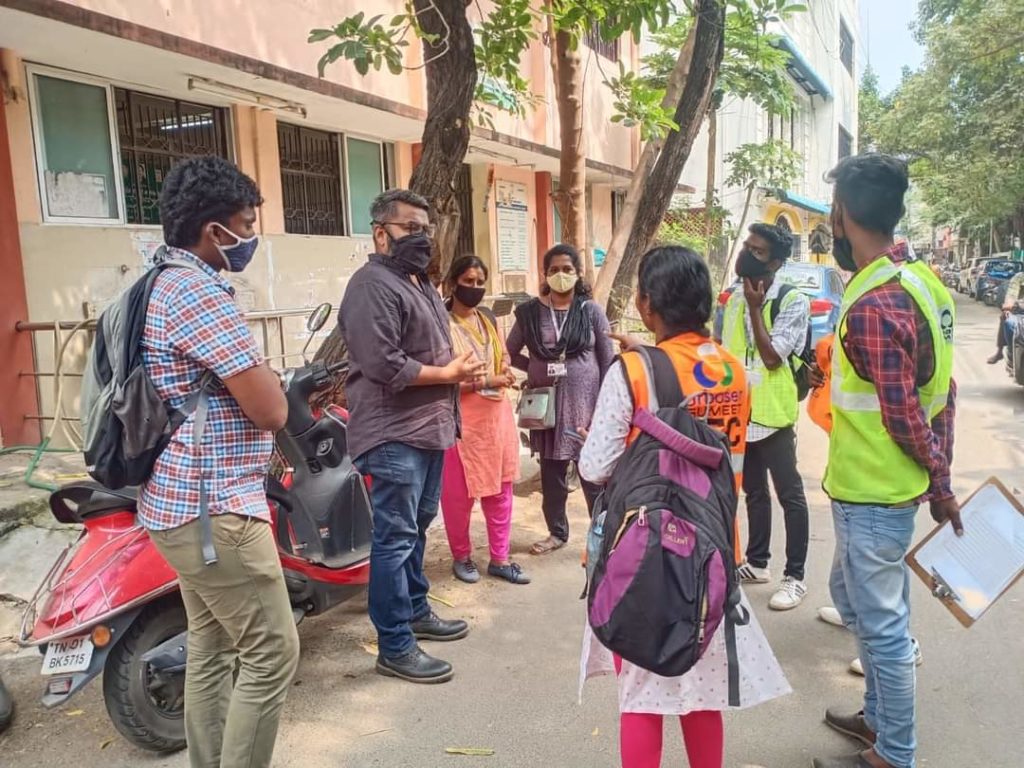
In October 2020, global circularity giant Urbaser, headquarter in Spain, joined hands with Pune-based Sumeet to manage waste in parts of Chennai. The contract is based on Key Performance Indicators for a period of eight years to serve over 37 lakh citizens across 207 sq. km, making it among the world’s largest solid waste management project, in terms of population covered and the duration. SolidWasteIndia spoke with Mr. V.R. Hari Balaji, Head – Information, Education and Communication (IEC) department for Urbaser Sumeet on the project’s progress.

Q1. Could you give us an overview of Urbaser Sumeet’s waste management activities in Chennai?
Urbaser Sumeet provides waste collection and transportation services in 92 wards across seven zones of Chennai. We do primary waste collection, that is, door-to-door collection of segregated waste from 8.5 lakh households, in addition to secondary collection at night. Our Urbaser Sumeet family comprises of 12,000 members. Over half our workforce comprises of women.
At night, our compactors clear the roadside bins (1100 litres capacity each) while doing mechanical and manual sweeping. All our activities are monitored at a state-of-the-art innovation and technology driven Command Control Centre, which is open to citizens based on prior scheduling. We organize public tours through initiating Eco-Clubs for educational institutions to understand the ‘journey of waste’.
Q2. This project is unusual in terms of the payment model. Could you please tell us more about your agreement with the GCC?
Unlike most waste management contracts, this concession is based on Key Performance Indicators (KPIs). As part of the KPIs, we conduct weekly activities with our target groups, host stakeholder consultations at various touch points as stated in our Mission Instructions & Operations Plan (MIOP). We hold result-driven intense campaigns on source segregation of waste and keep reviewing these for continual improvement. Tight Monitoring & Evaluation (M&E) systems help smoothen the process.
The project’s success is purely dependent on the following components:
– 1st side of the triangle: Guidance from Government of Tamil Nadu and Greater Chennai Corporation’s immense support;
– 2nd side of the triangle: Technology & Innovation driven process by Urbaser Sumeet;
– Base of the triangle: Utmost co-operation of the citizens.

In addition to its scope, Urbaser Sumeet is consistently involved in CSR interventions across the seven zones based on needs assessment. The aim is to develop the identified area into a usable area for the local community after understanding their specific needs through an Empathy Canvas Exercise.
Social Monitoring Committees (SMC) are formed with the support of the local residentsto ensure the sustainability of these kind of interventions. Mass Cleaning Drives on monthly basis to clear legacy waste & Operation Clean Sweep in hotspot areas are conducted to bling up Chennai.
This massive technology driven project has the following features:
– Engineering & Maintenance Facility(EMF) of international standards to manage entire fleet of vehicles parked in strategic locations;
– A brigade of MIS team members to log/analyse the daily data, generate reports to monitor/evaluate the operations and help our Leadership team to make informed decisions;
– Round-the-clock Environment, Health and Safety (EHS) service to ensure the utmost safety of all the staff members.
Q3. What kind of vehicles and equipment are being deployed by Chennai for waste collection?
Currently, we have deployed GPS-tagged Battery Operated Vehicles (BOV) for primary collection and compactors for secondary collection. Compactors with green light strips collect only wet waste and compactors with blue light strip collects only dry waste from the large 1100 ltr bins. Mechanical sweepers are deployed for clearing the main roads while tippers are used for clearing horticulture or garden waste. Bin-washers are used to wash the RFID-enabled 13,000 bins every fortnight. Bearing safety in mind in this pandemic scenario, we sanitize the bins and the area around the bins after cleaning.
Going an extra mile, we spray disinfectant on the water logged areas as well during monsoon. We have exclusive vehicles for removal of dead pet animals on the road which are handled separately. We also clear bulky waste on request when people relocate or dispose worn out furniture.

Q4. Could you please elaborate on your IEC activities.
We place a lot of emphasis on IEC. We educate citizens about three-way (dry, wet, domestic hazardous) waste segregation and not littering on the roads/ sidewalks. Understanding that when the WHY is clear, HOW becomes easy, we have adapted design thinking process for IEC. We have intensified our campaign by introducing Continuous Awareness Method for 4 days (CAM4) strategy wherein we visit households for four days continuously to educate them about the importance of source segregation of waste. To appreciate the households who segregate their waste, we affix “Thank you for segregating your waste” stickers on the façade of their households with their consent. We also interact with Resident Welfare Associations (RWAs) on a periodic basis and our conversation continues in exclusive ward-wise WhatsApp groups as well. Our IEC campaigns are customised specifically to different target groups (homemakers, domestic help, youth and children) and stakeholders, irrespective of gender at different touchpoints. Based on their style of understanding we organize our IEC strategy and content. We have found that a lot of children and youth are eco-conscious and are keen in knowing about waste management and want to spread awareness on waste management.
We organise zone-wide and city-wide events on waste segregation and its importance. Recently conducted beach clean-up drive which had a massive turnout of 3,000 participants who collected 75 tonnes of plastic in Elliott’s beach at Besant Nagar. Trash Walk is conducted (targeted at youth and homemakers), awareness rallies by joining hands with educational institutions and puppet shows for kids to transform Chennai as the most environment friendly city in India.
Q5. What is the impact of these efforts? Have household waste segregation levels gone up since Urbaser Sumeet began operations?
I can tell you that awareness levels have increased resulting in behaviour change in most of the locations. It is important that this behaviour change unfolds as practice to yield high segregation percentage. We are confident that with the immense support of Greater Chennai Corporation, guidance from the Government of Tamil Nadu and utmost cooperation of citizens, we will be able to achieve that.
There is a three-layered monitoring system by the GCC, Urbaser Sumeet and third party agency which monitors our daily operations.
Together, we are confident that we will be able to transform Chennai into Singara Chennai.

Q6. It’s been over a year since you began operations in Chennai. Could you please share some of your achievements so far?
We have been immensely successful in creating awareness among the public regarding the importance of waste segregation at source in most the pockets in all 7 zones, bearing in mind that Chennai Metropolitan has floating population. We have helped citizens to understand that each individual can make a huge difference in keeping the Chennai city clean and achieved behaviour change in areas it wasn’t happening earlier or stopped during COVID-19 lockdown. We have residents who regularly join us to create awareness on source segregation of waste in different locations.
Q7. What are some of the challenges you are facing on ground?
Changing the perception about converting waste to resource is a major challenge. There are ground-level realities we contend with every day. Also, there are certain areas where residents are used to throwing garbage in-between the rear side of the housing board building blocks. We are aggressively striving for sustaining the change to the level where citizens are habituated to source segregation of waste.
Q8. How is the collected waste being treated currently?
This is a Collection and Transportation (C&T) project on Public Private Partnership (PPP) mode. The wet waste is being sent to MCC – which is managed by Greater Chennai Corporation (GCC). The dry waste is given to RRC – which is handled by the GCC and the domestic hazardous waste is handed over to Tamil Nadu Pollution Control Board via Ward/ Zone office.



